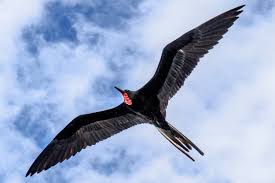Aerodynamics In Birds Flight – Zoology Notes For – W.B.C.S. Examination.
পাখির আকাশ পথে গমনের বায়ুগতিবিদ্যা – প্রাণিবিদ্যা নোট – WBCS পরীক্ষা।
The dominant aerodynamic forces that affect flight are lift and drag. The difference in the pressure of air above and below a wing produces lift. When a bird holds its wing at a sight angle to an air current, air flows faster over the upper surface than it does over the lower surface, thus creating less pressure above the wing than below it and causing lift. At the same time, drag, or resistance to the moving air, drags the wing backward. the combined effect of these two forces lifts the wing and drags it backward. Continue Reading Aerodynamics In Birds Flight – Zoology Notes For – W.B.C.S. Examination.
While most of the lift on a bird’s wing comes from the low air pressure on its top, a certain amount of lift is generated from beneath by air striking the under surface of the wing. Air flow in the under side stops at a point close to the wing’s front, or and then gradually speeds up until it is near the back, or trailing edge, by which time it has reached the same velocity as the air traveling over its upper surface.
If the front edge of the wing is tilted upward just a little bit and is placed in the air stream, the air will strike the bottom surface more directly, thereby increasing the lifting force on the wing from below. The more the wing is tilted upward, the more lift it will get, but only to a certain point: When the angle of tilt approaches the vertical, the air pressure against the bottom surface begins to push the wing backward rather than upward. If the wing is tilted too much, the lifting force eventually vanishes and the drag is so great that it stops the bird’s “buoyancy,” or forward movement. This results in what is commonly called a stall, and the bird must regain the proper wing angle and flight speed or it will crash.
Unpowered flight Gliding
Birds flap their wings to generate lift and thrust. When they stop flapping and keep their
wings stretched out, the wings actively produce lift (a vertical force sustaining them), not
thrust (force in the direction of motion). A component of the gravity force in the direction of
flight of a descending bird can as act as thrust. This mode of flight is called gliding. Birds like
vultures, albatrosses and storks are great gliders as they have very high lift to drag ratio. Bird
with large wing have evolved to become gliders as they have very high aspect ratios, which
also means that they have very high lift to drag ratio. Some fishes, amphibians, reptiles, and
mammals have also evolved to become gliders.
A bird has to produce both lift and thrust to counteract gravity and drag, and to maintain
flight at a certain level. As there is no active thrust generation during gliding birds use the
gravity to counteract the drag. To achieve this birds tilt their direction of motion downward
relative to the direction of incoming air. This results in an angle between the direction of
incoming air and the direction of motion. This angle is referred to as the glide angle. This
angle has an inverse relationship with the lift to drag ratio. Higher the lift to drag ratio,
smaller the glide angle. This ratio is also increasing with the Reynolds number, a fudamental
non-dimensional parameter in fluid mechanics that is proportional to the velocity and the size
of the bird.
Powered flight : Flapping
Flapping, in contrast to gliding, involves the active production thrust by the wings. There are
two stages in flapping: down stroke or power stroke, which produces a large proportion of the
thrust, and upstroke or recovery stroke, which depending on the bird’s wing produces some
amount of lift. During the upstroke the wing is slight folded inward to reduce the upward
resistance. The angle of attack of the wing is also changed for these strokes. It is increased for
the down stoke and decreased for the upstroke.
As the wing is flapping, it also moving forward through the air along with the body of the
bird. The amplitude of the up and down movement is very small close to the body. But
towards the wingtip the amplitude is much higher. As a correct angle of attack has to be
maintained throughout the wing, the birds resort to twisting them. As the wing is twisted, the
outer part of the wing moves downward, so the lift in this part is angled forward. This is
similar to what happens when bird does a dive. But in this case only the wing moves
downward and no the entire bird. The bird can therefore generate the required amount of
thrust without losing altitude.
Please subscribe here to get all future updates on this post/page/category/website


 +919674493673
+919674493673  mailus@wbcsmadeeasy.in
mailus@wbcsmadeeasy.in







































































































